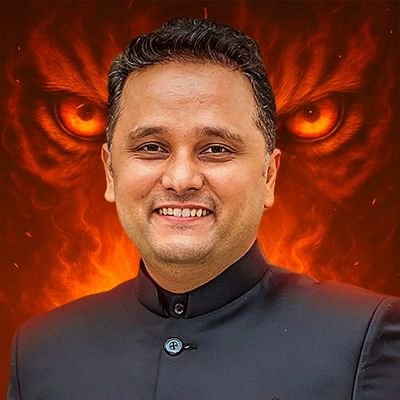
Archit Nanda
@Archittttt
Followers
193
Following
18K
Media
63
Statuses
727
🧵Who is Francesca Orsini? Many people here have expressed ignorance about her work. Lets change that. Her google scholar profile mentions that she has 2500+ academic citations. That’s over two thousand published journal articles or academic books referencing her work.1/n
I have no views on this scholar Francesca Orsini. Had never heard of her. But those of us from a rooted background, who speak Hindi at home, read Hindi books as well, can only roll our eyes at this rather bizarre claim that 'few have shaped our understanding' of Hindi literary
81
212
654
Orsini once claimed Allahabad to be her ‘second home’. I write in the hope that she returns to Allahabad soon, to read and write in the libraires of a city she calls as home. 🥹23/n
14
9
112
Arvind Krishna Mehrotra wrote a poem about her when she was researching in Bharat Bhavan Library, Allahabad. The poem describes her as ‘a researcher from Cambridge’ turning the pages of dusty records’ looking ‘at Indian reading habits during the colonial period.’ 22/n
3
11
68
7️⃣ Conclusion 🗞️ I have barely scratched the surface of Orsini’s scholarship. She has transformed how scholars understand Hindi–Urdu literature, multilingualism & world literature. ✨ Let me end with a poem. 21/n
2
6
67
Her argument re-centered non-Western literatures and proposed a located, multilingual methodology, making Hindi literature part of the discourse of World Literature. 20/n
1
4
50
She wrote that ‘the problem with current approaches to world literature for people who are, like me, rooted in the literature of a non-Western region is that they end up making nine-tenths of the world drop off the map . . . or appear hopelessly "peripheral". 19/n
1
5
53
They divided the world into literary center and peripheries. Cities like London, Paris, New York constituted as literary centers and they argued that genres like novel travelled from center to peripheries. Orsini rejected the idea because it privileged Western cities. 18/n
1
4
50
6️⃣Hindi and World Literature 🌍 She brought Hindi literature in conversation with the discourse of World Literature. In early 2000s, scholars conceptualized the idea of World Literature to study the circulation of texts across the world. 17/n
1
3
53
📜Her words: ‘If the new [colonial] ideas of literature called for a rejection of old tastes as decadent and harmful, the result was not in fact a wholesale casting- off but more often a coexistence of contradictory tastes, a new multilingualism, and a new hybridity.’ 💫16/n
1
5
58
📜Her chapter on colonialism challenges the accepted scholarly wisdom that colonialism changed the aesthetic and literary culture of India. She shows how precolonial trends and tastes for songs, braj poems and Urdu poetry continued after colonial role. 15/n
1
4
60
📜One brilliant chapter in her book traces the genre of Kathas and how same or similar stories travel across languages in Braj, Awadhi and Persian connecting ‘texts that have been considered to belong to different [literary] traditions’. 14/n
1
5
64
She knows Hindi, Urdu, Braj, Awadhi and Persian and was uniquely placed to write a multilingual history of North India. She wrote East of Delhi, focusing on the region of Purabh/Awadh. 13/n
1
10
76
5️⃣The Multilingual North India Everyone in India is multilingual. People speak or understand two-three languages. Yet our literary histories are monolingual, confined to separate literary departments of Hindi, Urdu and English. Orsini understood this gap in methodology. 12
1
8
73
✨ For me, the most resourceful element is the Appendix of her book where she gives a one-page biography of 74 Hindi writers who contributed to the creation of the Hindi Public Sphere. Here is a short biography of Devidutt Shukla who edited the magazine, Saraswati. 11/n
1
10
79
Her book The Hindi Public Sphere becomes an essential read if you need to understand that time period (1920-40). 📘 The book maps the history of how Hindi writers, including women, conceptualized history, engaged with nationalism and imagined a shared political future. 10/n
1
5
79
4️⃣ Beyond Premchand: Premchand was not the only great Hindi writer of his times. Surely, his writing was part of a wider public sphere of Hindi magazines, newspapers, fiction and historical works. Who were the other prominent writers of his times? 9/n
1
4
64
In short, Francesca Orsini has had both a personal and an academic connection with three generations of Premchand’s family. Few X users can claim this distinction. 🌿8/n
2
10
93
Premchand’s grandchildren, Alok Rai and Sara Rai, are close friends of Francesca Orsini. She dedicates her first book to Alok Rai and his wife. She also thanks Alok for reading the ‘very first draft’ of her book. 7/n
1
7
96
Her essays have prominent images to give readers a taste of the design, structure and content of Hindi magazines. 📰 While researching her first book, she lived in the house of Premchand’s son, Amrit Rai, and thanks him in the acknowledgements for his ‘warm hospitality.’ 🏠6/n
1
5
83
that published Hindi short stories and translations. The magazines, though prominent in their time, have largely been forgotten by Hindiwallahs. 📰Orsini brought this neglected archive into scholarly attention by writing a series of academic essays on Hindi magazines. 5/n
1
13
108
Lets explore Orsini’s scholarship through her work on Premchand and his family. 📖 She edited the Oxford India Premchand, introducing his work to English readers. Premchand’s two sons, Sripat Rai and Amrit Rai ran two Hindi magazines titled Kahānī and Naī Kahāniyān 4/n
2
11
86

